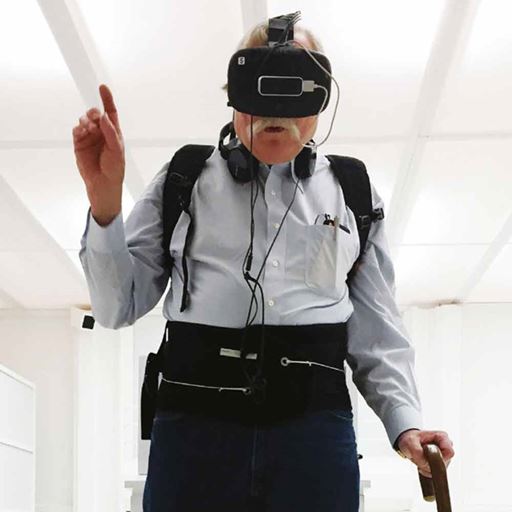Book explores the science behind inhabiting another’s body
-
Date
Fri 31 Jan 20

A new book exploring the potential possibilities, as well as the pitfalls, of virtual embodiment has shown how combining neuroscience and performance can help us better understand how we interact with each other and with the world around us.
Immersive Embodiment: Theatres of Mislocalized Sensation, by Dr Liam Jarvis of the Department of Literature, Film, and Theatre Studies explores everything from the way immersive techniques can be used to inform patient care to the ethical questions surrounding its potential misuse inspired by survival horror games.
“Immersive embodiment concerns perceptual tricks and body illusions that make you feel like you physically inhabit a body other than your own,” explained Dr Jarvis.
“They can be used for good, to understand how racial ethnicity can affect our implicit bias or to help doctors understand their patients’ needs from a first-person perspective for instance. But, as with all scientific developments, they also have possible negative uses, such as to prolong pain or anxiety.”
Dr Jarvis, a trained theatre director interested in how technology can be used to engage an audience, became interested in immersive embodiment and the relationship between performance and neuroscience after seeing an online video of a brain being dissected into 2,401 slices.
Inspired by the story of patient HM, whose memory-afflicted brain was dissected in the video, Dr Jarvis’ theatre company’s production, 2,401 Objects gave audiences the opportunity to imagine what it was like to experience the memory lapses in patient HM’s moment-to-moment consciousness. By dissecting the stage using a giant sliding screen and projections, the audience was able to watch patient HM’s life through the eyes of the scientist dissecting his brain.
“This idea of casting the audience, unrehearsed, as something else within a fiction is very interesting to me. And there’s a relationship between this and other developing cultural experiences like virtual reality that I wanted to explore further,” said Dr Jarvis.
Dr Jarvis’ book, which explores immersive embodiment in healthcare, art installations, virtual reality video gaming and theatre, as well as the neuroscience that underpins it, includes a series of case studies.
One case study, about a collaborative project between Dr Jarvis and Parkinson’s UK, showed how techniques inspired by the famous rubber hand illusion, allow people to experience and understand how tremors intrude on important moments in the lives of those with Parkinson’s.
Studies such as this can help healthcare professionals, as well as carers and patients’ families, empathise with another’s bodily experience.
Other case studies include one about artist Jane Gauntlett, who, after suffering a brain injury, used these techniques to help her communicate with her doctors. Another explores artworks developed out of entertainment, such as location-based group virtual reality gaming experiences.
“I’m trying to capture something that’s happening across several different cultural activities some of which are trying to create profound social, personal or political change and some of them are about forgetting your body to experience what it’s like to be chased by zombies, or to experience the visual perception of an insect, and everything in between,” said Dr Jarvis.
.jpg?mh=500&mw=500&hash=6568B6C9CCF5290A596BEF6678B6AD0E)



